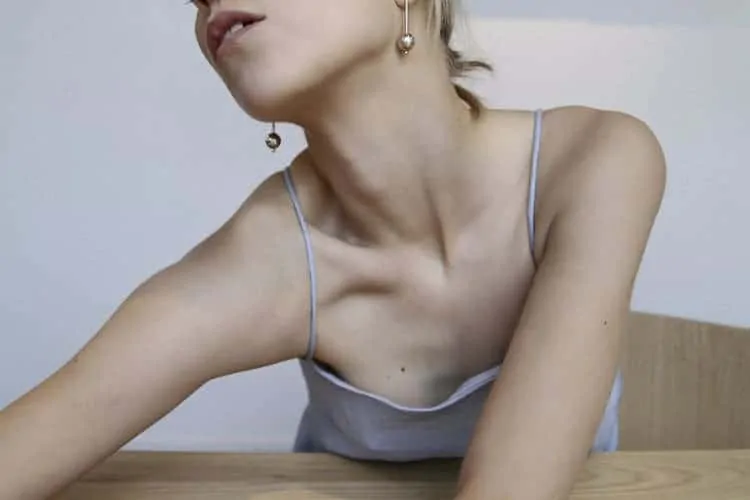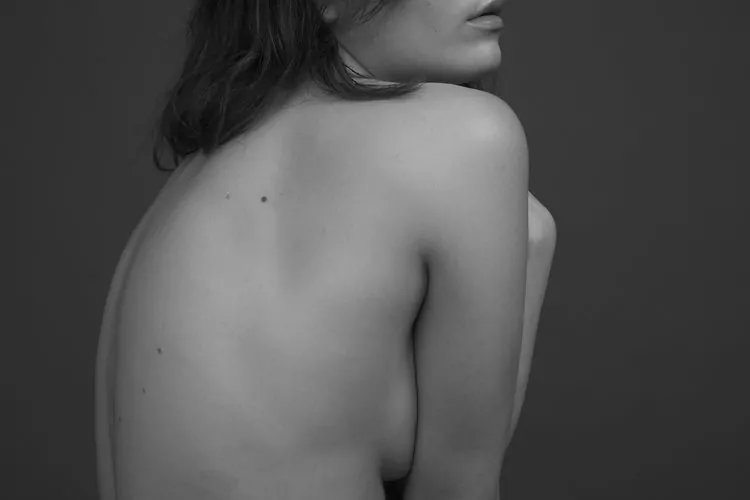SUSTAINABLE FASHION 101: WHAT YOU NEED TO KNOW
It’s not an easy feat to be a minimalist in a consumerist society. Intent Journal shows us how to balance minimalism and consumerism using the example of sustainable fashion.
We often discuss the balance between beauty and utility, but recognize the thin line between the two. So, when we were introduced to Intent Journal we were thrilled to find a well-thought-out perspective on how to analyze needs vs. wants within the context of style.
We spoke to the Founding Editor, Sigrid McCarthy, to enlighten us on the ethical fashion movement and her team’s carefully considered mission. She shared her views on capsule wardrobes and other concepts within the slow fashion movement.
Simplify Your Style
Learn to build a capsule wardrobe, create a unique style and curate a closet you adore.
How do you define sustainable fashion?
Truth be told, I struggle to find concrete meaning in the term ‘sustainable fashion’. When you look at the two terms individually and really consider their traditional meanings, the thought of them married together seems quite jarring.
Fashion, as a general rule, is fleeting and trend focused; whereas sustainability looks to longevity and extending life cycle. If these two terms are to be used together, we need to reevaluate the overall fashion system and how it currently operates.
It’s much more complicated than making something out of organic cotton and putting ‘sustainable’ on the tag. I worry that people are trying to find one, all encompassing definition for a term that has multiple layers and nuances.
It is essentially an umbrella term that houses a general desire to safeguard natural and human resources, yet it is used in different ways depending on one’s bias or intention. I prefer the term ‘ethical fashion’, as it asks people to consider their own ethics and how their personal values influence what they are comfortable supporting. Whether sustainable or ethical, these all fit nicely within the lifestyle of minimalist fashion.
It has greater meaning for me, as it requires deeper thought and internal contemplation, and I believe that real change will only occur once we’ve experience a mass ‘awakening’.
- Where do I place the most value?
- Am I comfortable wearing animal by-products if the workers involved are treated ethically?
- Do I take a brand’s word as gospel, or do I need third-party assurance that codes of conduct are actually adhered to?
It is impossible for one fashion brand to tick all of the ‘ethical’ boxes, so we must ask ourselves these types of questions as a way of establishing shopping habits that respect our personal values and moral compass.

Does the sustainable fashion movement have longevity?
Given the significance of the issues we’re facing, I believe this is a long-term shift that will surpass a mere trend. We can no longer ignore the environmental degradation and human rights abuses caused by the fashion industry—they are too grave, and due to greater transparency and media coverage they are increasingly coming to light.
Developing a healthier, more sustainable fashion system requires more grunt than what can be found in a fad. For this movement to have more substance than a mere trend, the long term goal for the industry needs to be to establish a standard whereby ethical practices are the norm not the selling point.
I would like to see all brands embracing lower impact processes throughout the entire value chain (in all aspects of their production, not just through capsule wardrobe collections). I would like to see all ‘consumers’ moving away from mindless consumption and becoming active changemakers—viewing each purchase an act of voting and understanding the purchasing power we all possess.
We do not need to buy into the warped set of values this industry has gradually embraced over the years. Going forward—to ensure the longevity and integrity of this movement—we need to engage wider industry, stakeholders, government and businesses and work collaboratively together.
We need simple questions such as “Who made my clothes?” or “What does ‘sustainable’ mean to your brand?” to be considered legitimate enquiry and not suspicious probing. We need the ‘story’ behind a garment to be complementary to the design and quality.
What are Intent Journal’s core pillars?
One cannot talk about environmental concerns without taking into account the lives of the workers, or the relationship between people and clothes/objects. After all, the environmental concerns that spurred the sustainability movement largely exist because of the lack of mindfulness we have all established.
We are no longer taking the time to question our habits and overall environmental and social impact. Fast fashion as a general rule encourages disposability by not allowing the wearer time to develop a connection with a garment.
I worry that we are starting to see a different form of consumption develop; one that pushes a ‘better’ product without tapping into the actual psychology behind buying. Hence Intent’s focus on the personal relationship between wearer and product.
I don’t want the ‘feel good’ factor associated with buying something made from organic cotton to override the contemplation of need versus want. Fast fashion labels are becoming increasingly disingenuous by attempting to appeal to the conscious consumer via token initiatives — i.e. capsule ‘sustainable’ collections and recycling campaigns—while still relying on the fast fashion business model.
No matter how you package it, this model will always be unsustainable as it is founded on overproduction, cheap manufacturing, overconsumption and shallow relationships with clothes.
Intent exists for a few core reasons, including:
- To question the current fashion system and navigate positive ways forward.
- To instill a level of mindfulness among ‘consumers’ (for lack of a better word).
- To reconnect the designer, maker and wearer by pushing for greater transparency.
- To safeguard our natural, limited resources and highlight the negative environmental impact caused by the fashion industry.
- To prove that the stigma attached to ‘ethical fashion’ is redundant and that we all have a collective responsibility to create a healthier relationship with what we wear. Whether we consider ourselves ‘fashionable’ or not, we all wearing clothing and therefore engage with the fashion industry.
- To bring back the beauty of fashion.
Yet you embrace and celebrate fashion. Why?
I don’t believe you can really change an industry without engaging in it and pushing for change in somewhat of a respectful way. When starting Intent, I knew that the framing of the journal’s message was incredibly important—it needed to feel inclusive, aspirational, and progressive. It needed to appeal to people visually as well as intellectually.
I didn’t want to dilute our core ethos too strongly, but at the same time I didn’t want to come across too heavy handed. One year on, and I’m still fine-tuning our message and seeking this balance. Intent embraces what makes fashion fundamentally so special: the respect and admiration for quality craftsmanship; the meaningful relationship with garments; the role fashion can hold in our lives.
I am not against fashion, I am against the path it has taken. It is so far from its roots now; it is no longer a fashion industry, it has evolved into a garment industry that focuses on pushing product and maximizing profits.
I hope that by providing a platform for deeper exploration and respectful ‘activism’, we can influence the industry to reconnect with its traditional values (while also embracing innovative, forward thinking technologies and processes).
Intent is a celebration of the industry’s potential.

How have you grown such an engaged community?
I have been incredibly fortunate to meet many of these people through my work at Ethical Clothing Australia (ECA). My day job has opened up this beautiful community of likeminded, remarkable people—many of whom are too humble to promote their work and so often go under the radar. I love being able to share their stories.
The others, who I have not crossed paths with via ECA, have mostly been connections online. After having admired their work from afar, I have then approached them ‘cold’ for features. I tend to disregard how how established or out of my ‘league’ they are, and just take the plunge! I am floored by how many have actually allowed Intent their valuable time. Such a thrill.
To me, this positive response is an indication that people are looking for deeper meaning and substance in the fashion industry. I went into this project thinking I had a strong sense of ethics in fashion; however, I am forever learning from those we profile and their opinions are helping shape my own.
Why start a journal vs. being a designer or retailer?
My strengths and interests lie in communication, production and curation. I have wanted to be a magazine editor since high school! I remember looking through fashion publications as a teenager and struggling to connect with the content.
At the time I wasn’t aware of the reasons behind this, it just felt too shallow. I’ve always struggled with fashion media and its tendency to describe rather than analyze. For years I have asked myself, ‘Why are they telling me the dress is navy when I can see the photo next to the text?’
Developments in technology mean we no longer need writers to merely describe; we need analysis. We need them to ask questions and encourage critical thinking. I launched Intent Journal as a way of filling this gap in the industry—I wanted to generate healthier, more in-depth discussion while also appealing to people on a cosmetic level.
I believe that there is a growing audience out there wanting more from fashion media as well. They want to be active citizens with active minds. They want to be challenged, provoked, inspired. I see a real need for a fashion publication to exist that questions the system itself and navigates ways forward. I’m hoping that Intent can be this publication.
Elaborate on your price per wear concept and how it relates to a capsule wardrobe.
It’s important that we bring things into our lives in a deliberate manner. I encourage people to consider the following when contemplating a purchase:
- Do I actually need it?
- Will it either a) serve a purpose or b) bring value to my life?
- Will it complement other garments in my ‘curated wardrobe’?
- What resources were used in its construction? Is the brand transparent about this?
- Will I continue to wear it for years to come?
I also rarely buy something on first visit to a store. I go home and think about it, and if it’s still on my mind a week later I’ll go back.
What are your future plans for Intent Journal?
At this stage, our website is our main form of communication. We have also injected much time and thought into how our Instagram can act as both a resource and visually pleasing ‘scrapbook’. It has always been our intention that the journal would go to print at some stage, but to honor the ‘slow’ movement we are yet to pursue this (ha).
The idea though is that we will release a ‘book’ style magazine that people can then treat as a long term keepsake. The content will not be time specific, so will have a sense of longevity that many standard magazines lack.
I personally believe that our content can only be appreciated in the way it deserves if the reader is given the chance to sit down and engage with a tangible product. A computer screen just doesn’t do it justice.
Image credit (from top to bottom): Jasper Kitschke, Ellie Rose McLean, Jasper Kitschke, Hannah Roche.